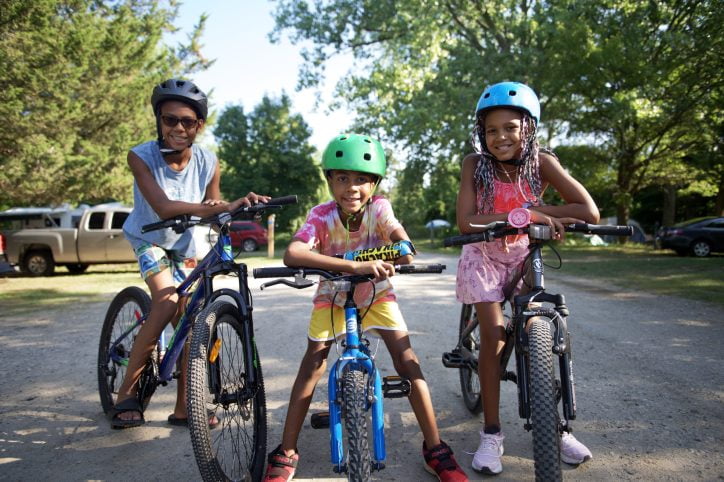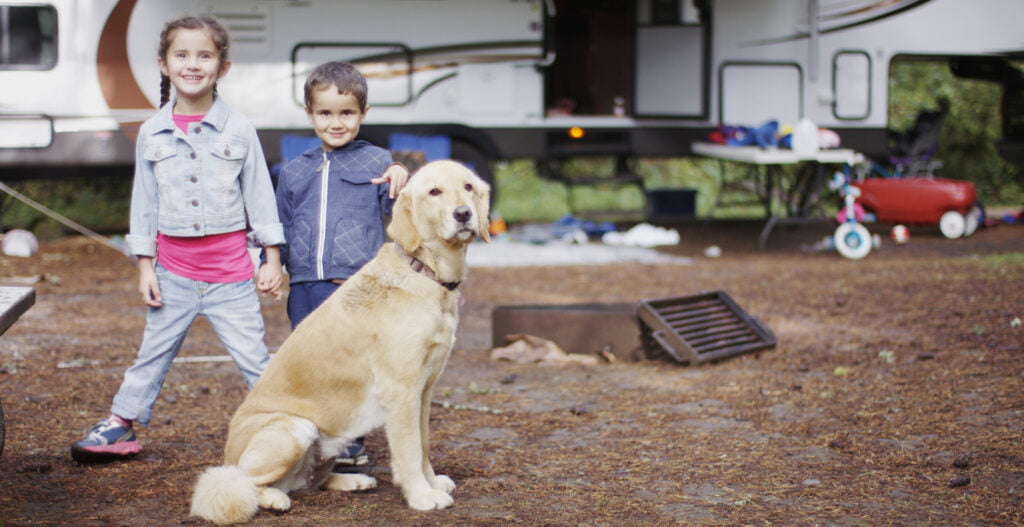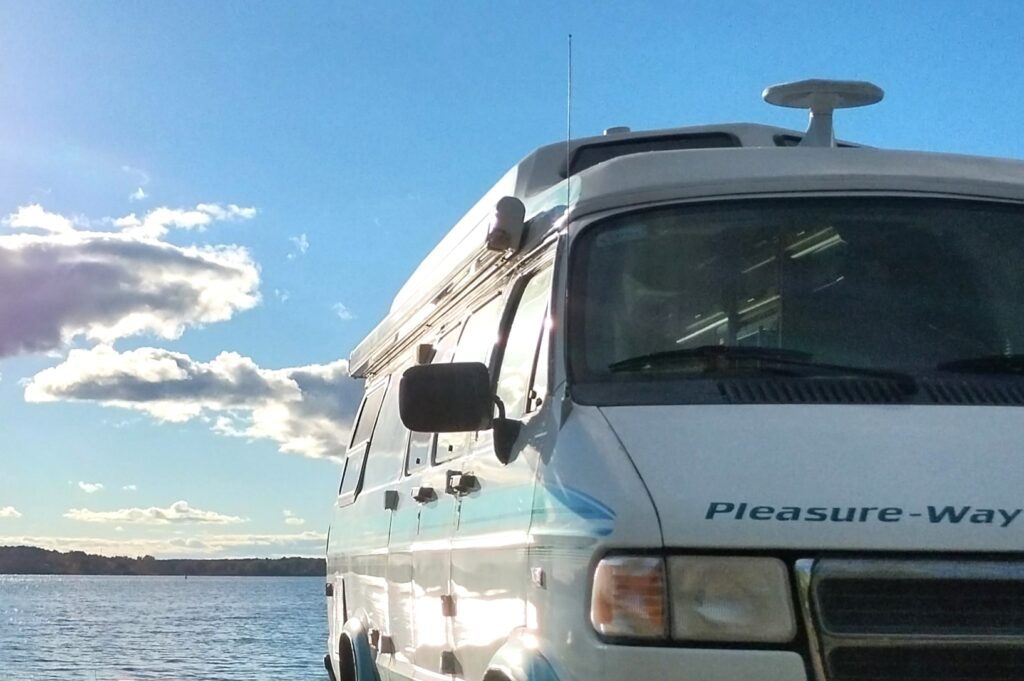The landscape and the culture change as you head east-west across Canada. The vast grasslands of the Prairies have become a grid of agricultural operations and fantastic small-town stops, always crowned by the beauty of the blue prairie sky; the mountains of western Alberta and British Columbia are chock full of RVing opportunities; and the North showcases the wilderness and wildlife that Canada is famous for. It’s time to explore!
Plan for success
- Be realistic about limitations, attention spans, interests, and energy levels.
- Plan driving distances and times that won’t wear everyone out
- Include younger ones in the planning. Ask what they’d like to do.
- Choose a suitable number of days for a trip. A longer vacation will depend on your comfort level with each other, the kids’ interest level and their sense of well-being away from home.
- Use Google Maps to research and plan breaks in the drive. Find swimming spots, splash pads, climbers and parks.
- Talk clearly about travel times, sleeping arrangements, meals and snacks, daily tasks, bathroom and shower facilities, and access to electronics and Wi-Fi.
- If possible, travel in the shoulder seasons. It’s easier to book sites.
- Pack various things to keep kids busy—books, craft supplies, puzzles, card games, and sticker books.
- Create a trip scrapbook. Kids can glue, trace and colour.
Where to go
Canada is a huge country, so we’ve highlighted a few top sights and a list of other worthy stops by region.
Prairies
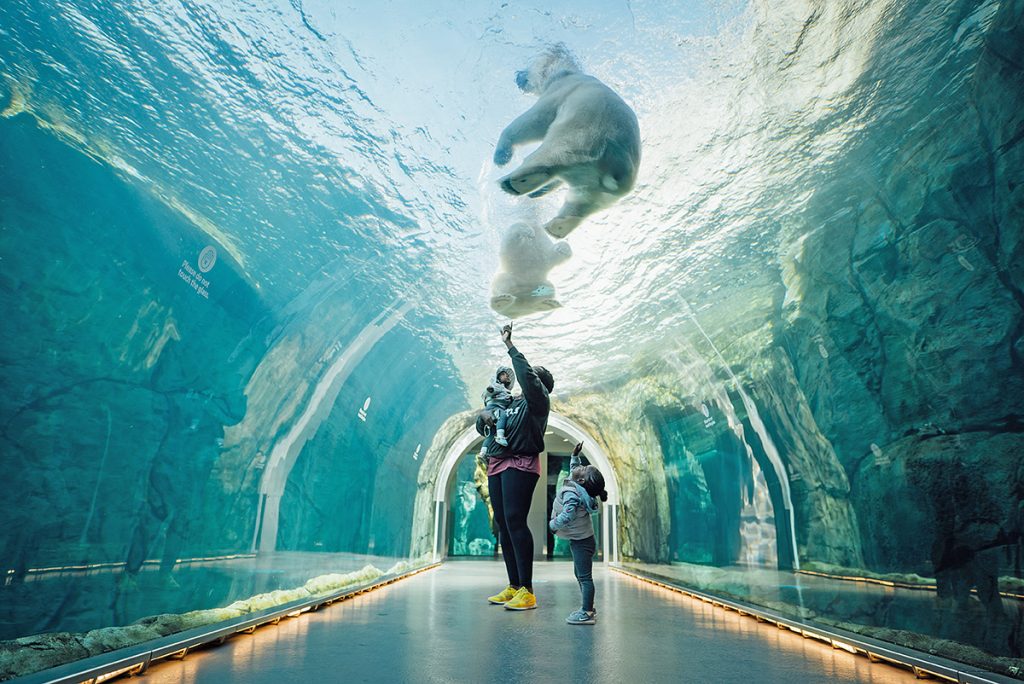
Photo credit: Travel Manitoba.
A highlight of the Assiniboine Park Zoo in Winnipeg is the Journey to Churchill, featuring northern animals, with an underwater tunnel to watch polar bears swim overhead. The Winnipeg International Children’s Festival happens at The Forks in early June. Lilac Resort, a complete RV, lodging and waterpark resort, is 20 minutes east of Winnipeg.
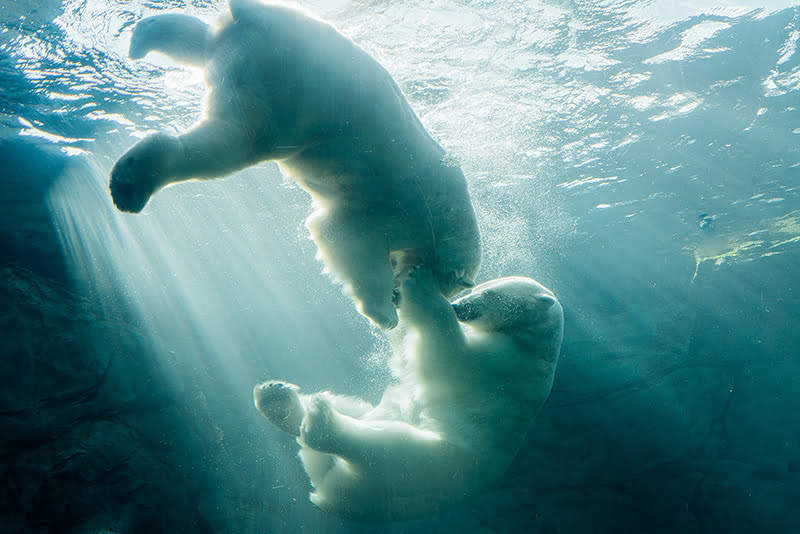
Photo credit: Travel Manitoba.
The Western Development Museum in Saskatoon has “boomtown”—the recreated smalltown street during the boom in the 1910s. Explore storefronts and period homes. Check Saskatchewan’s interactive map for a selection of nearby campgrounds.
Wonderhub Children’s Museum in Saskatoon includes the “Discovery Mine,” where kids gear up in hard hats, vests and headlamps, then descend one km “below ground” for an immersive experience into the Saskatchewan potash industry.
Travel north along Lake Winnipeg to Gimli, a community with the largest population of Icelandic descendants outside of Iceland. Taste Icelandic goodies at the local bakery, visit the New Iceland Heritage Museum and snap a photo with the larger-than-life Viking statue. Find a site at the nearby Winnipeg Beach Provincial Campground.
Some other ideas include:
- Watch for bears, elk, moose, and wolves at Riding Mountain National Park in Manitoba.
- Falcon Beach Ranch—a 1.5-hour drive from Winnipeg—has horseback trail rides, one of which goes to the site of a well-documented UFO sighting.
- Winnipeg has multiple children’s activities, including the Manitoba Children’s Museum (for kids up to age 13) and the Manitoba Museum (with a hands-on science centre and planetarium).
- The Canadian Fossil Discovery Centre in Morden, Manitoba, has Canada’s largest collection of marine reptile fossils.
- The Centre Block of Cypress Hills Interprovincial Park features a swimming pool, hiking trails, ziplining, and one of the largest Dark Sky Preserves in the world.
- In central Saskatchewan, Prince Albert National Park is a camping experience at the transition between prairie fescue grasslands and the lakes and wetlands of the mixed wood boreal forest.
- Meet the farm animals at Motherwell Homestead National Historic Site just east of Regina.
Western Canada
Of the 250 known buffalo jumps in North America, southern Alberta’s Head-Smashed-In Buffalo Jump is the largest, oldest, and best preserved. The Interpretive Centre at the World Heritage Site shows the sophisticated hunting techniques of the Blackfoot tribes, where herds of buffalo were stampeded over cliffs and harvested at the bottom for hides and meat. Oldman River Provincial Recreation Area has 25 campsites (no hookups) and is just a short drive away.
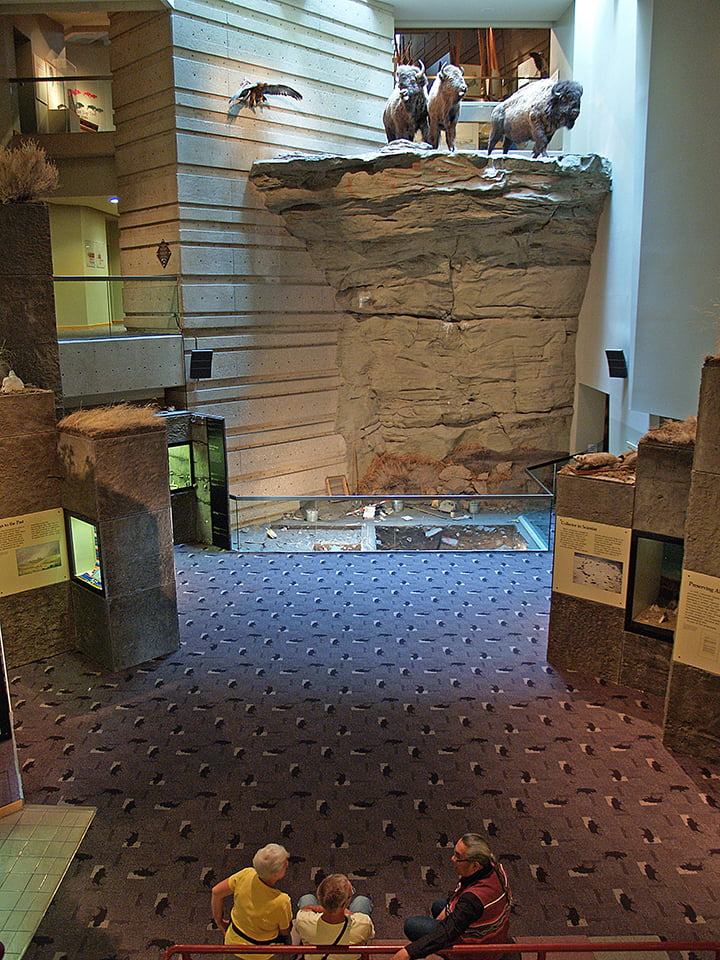
Photo credit: Josephine Matyas.
All kids love dinosaurs, and Dinosaur Provincial Park in southeast Alberta boasts the largest concentration of Late Cretaceous dinosaur fossils on the planet. Guided tours and daily programs are about experiencing the outdoors and seeing actual fossils in the ground. The badlands geology—including strange hoodoos—make for great hikes. There’s a large campground inside the park.
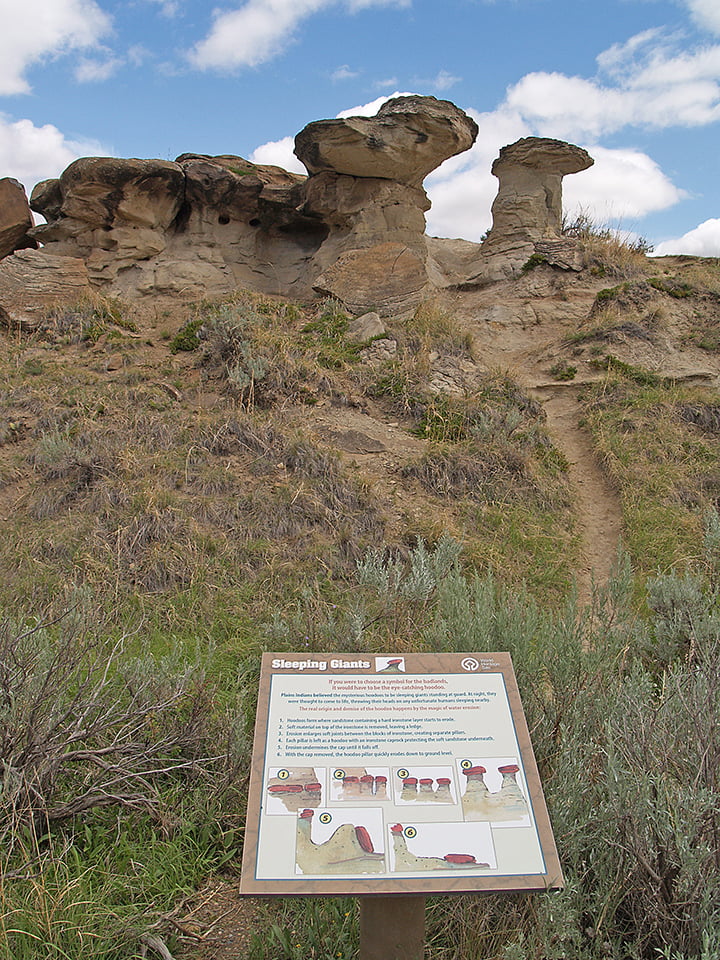
Photo credit: Josephine Matyas.
On Vancouver Island, Tofino is perfect for wildlife viewing (whales in March-November and bears in April-October), family surf lessons, beaches and tidal pools at low tide (North Chesterman Beach and MacKenzie Beach are best). Green Point Campground—20 minutes south of Tofino—is surrounded by miles of sandy beach.
Although technically a ghost town, Barkerville Historic Town & Park in central B.C. teems with life in the 100+ restored Gold Rush-period buildings—from the saloon to the Chinese ‘wash-and-dry’ laundry. Interpreters in costume walk the streets, man the shops and play their parts to the max. There are three campgrounds close to the park entrance.
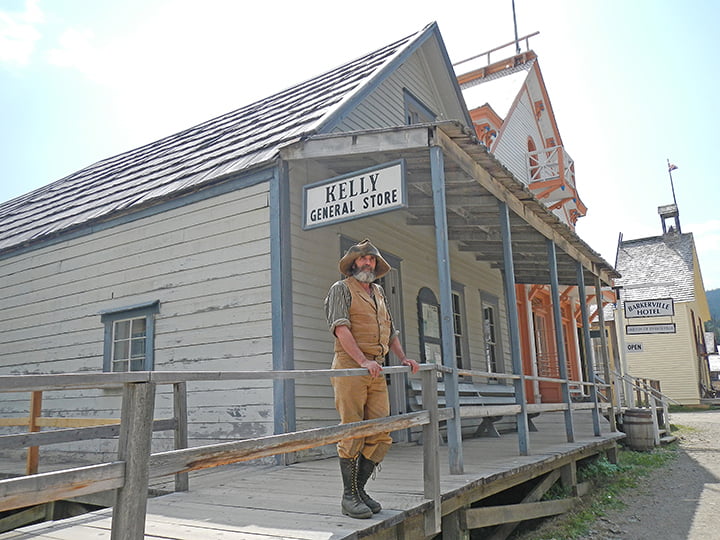
Photo credit: Josephine Matyas.
In the B.C. Kootenays, Revelstoke makes a great base camp for exploring nearby Mount Revelstoke National Park and the alpine scenery of Glacier National Park. In the Kootenays, kids can ride a mountain coaster, play at the aerial adventure park, hike, bike and take family-friendly floats and paddles along the Columbia River near Fernie. It’s a large area, so plan travel times carefully. Campgrounds are aplenty. . . but they fill early in summer.
Some other ideas include:
- The Royal Tyrrell Museum, north of Calgary, has galleries home to the “footprints” of ancient creatures, from tiny critters to the largest collection of giant dinosaur skeletons worldwide.
- Find a cowboy-style experience travelling the Cowboy Trail from Calgary to Pincher Creek.
- Rathtrevor Beach Provincial Park on Vancouver Island has wide flat beaches and calm, shallow waters. The treed campground is home to a huge population of wild, formerly domestic bunnies.
- North America’s largest free water park is at Vancouver’s Granville Island.
- Explore the new Harrison Sasquatch Museum filled with artifacts, history, witness accounts, science and Indigenous beliefs about “Sasq’ets” (late summer 2023 opening).
- Whistler, B.C., has free family-friendly events, attractions, juggling acts, circus performers, musicians, bike stunt riders, dancers, and acrobats—from mid-May through September.
Northern Canada
The chance of encountering Yukon wildlife is excellent. Bears and mountain sheep create “wildlife jams” as passersby spot them beside the roadways; caribou, moose and grizzly bears are found across the territory. You can see them in a more controlled setting at the Yukon Wildlife Preserve.
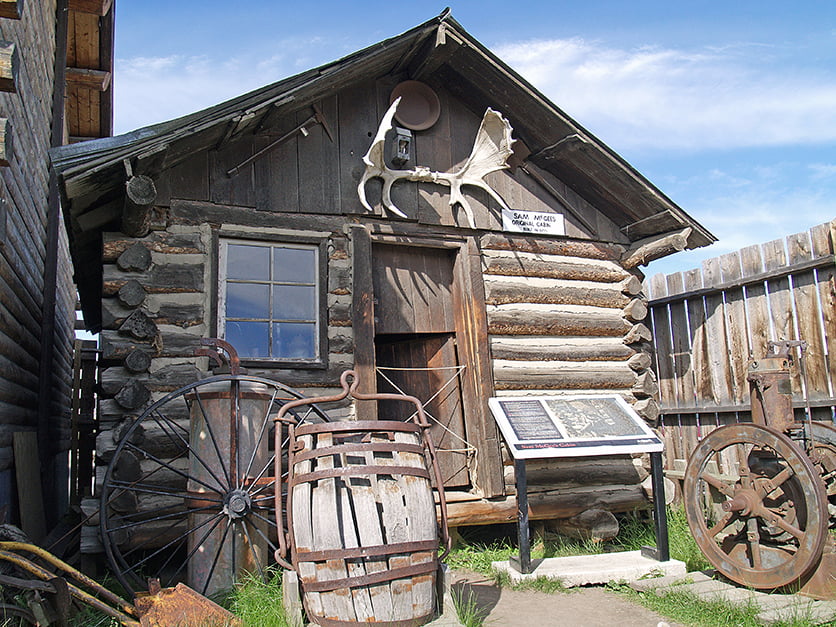
Photo credit: Josephine Matyas.
Museums that include the fascinating Klondike Gold Rush are a draw for kids. Try the MacBride Museum of Yukon History in Whitehorse and peer into prospector Sam McGee’s cabin, or visit Dawson City Museum with the award-winning film City of Gold about the Gold Rush. The Yukon River Campground is on the Top of the World Highway, just across the river from Dawson City.
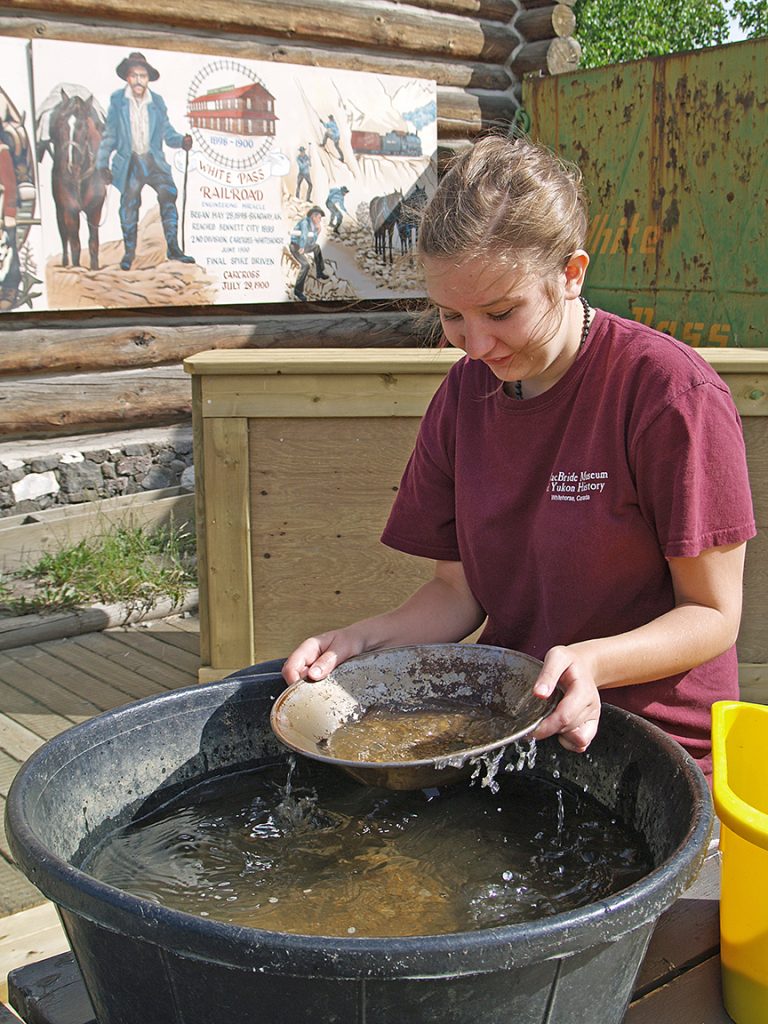
Photo credit: Josephine Matyas.
Take a once-in-a-lifetime flight over the world’s largest non-polar icefields with Kluane Glacier Ice Tours in Haines Junction. Kids under 18 fly for free with two paying adults (maximum two per flight). Some of the Yukon’s best camping is nearby at Kluane National Park’s Kathleen Lake Campground, with stunning landscapes to paddle and hike.
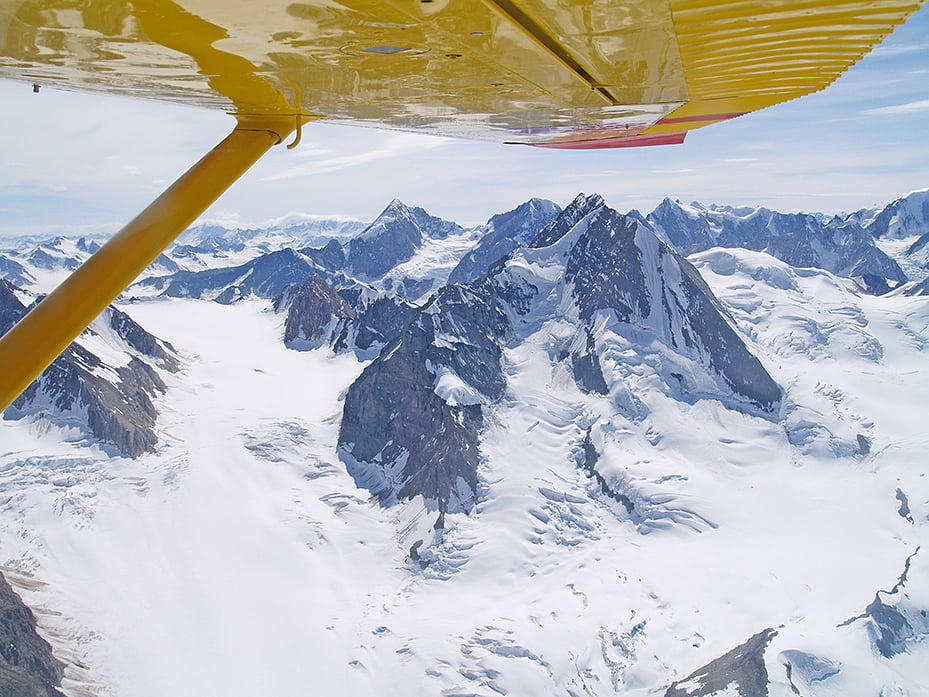
Photo credit: Josephine Matyas.
Some other ideas include:
- The White Pass and Yukon Route Railway are operating on the Canadian side this summer for the first time since the pandemic began.
- Travel to Carcross—west of Whitehorse—to visit the world’s smallest desert or get out on the world-class Montana Mountain biking and hiking trails.
- Check for reopening dates at the Yukon Beringia Interpretive Centre in Whitehorse. The displays and dioramas transport visitors to the Ice Age landscape of Beringia (the dry, unglaciated land bridge that linked Alaska and Siberia).
- Pan for gold with Goldbottom Mine Tours in Dawson City.
- Try to solve an Escape Room puzzle at the Klondike National Historic Site in Dawson City.
- The sun barely sets from May through July at Wood Buffalo National Park (the world’s largest Dark Sky Preserve) in Northwest Territories. Good luck getting the kids to bed early!
Tips for Canadian RV Travel
- Investigate provincial park day passes. They let you hop into a provincial park along your route for a quick swim, a hike to top up your freshwater or dump your black tank.
- Parks Canada’s annual Discovery Pass covers admission (but not campsite fees) to more than 80 destinations for the full year.

